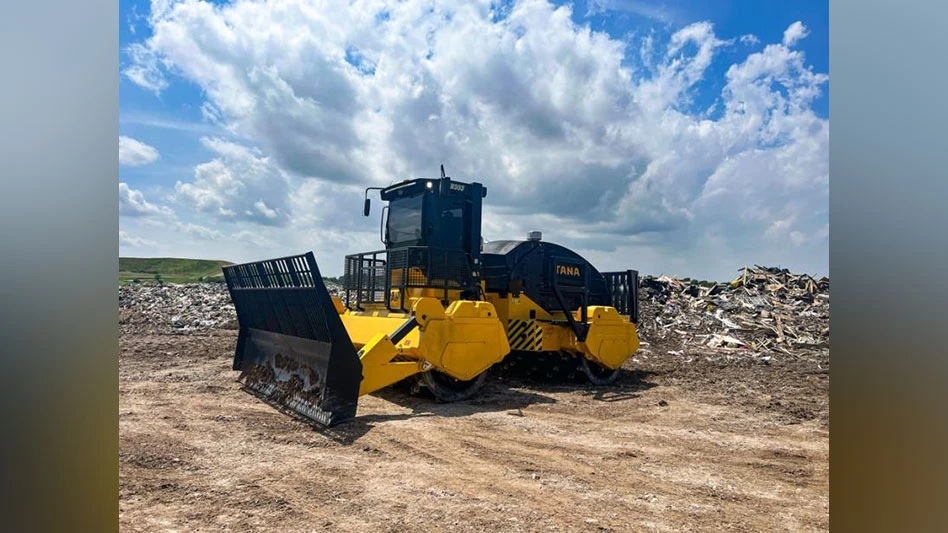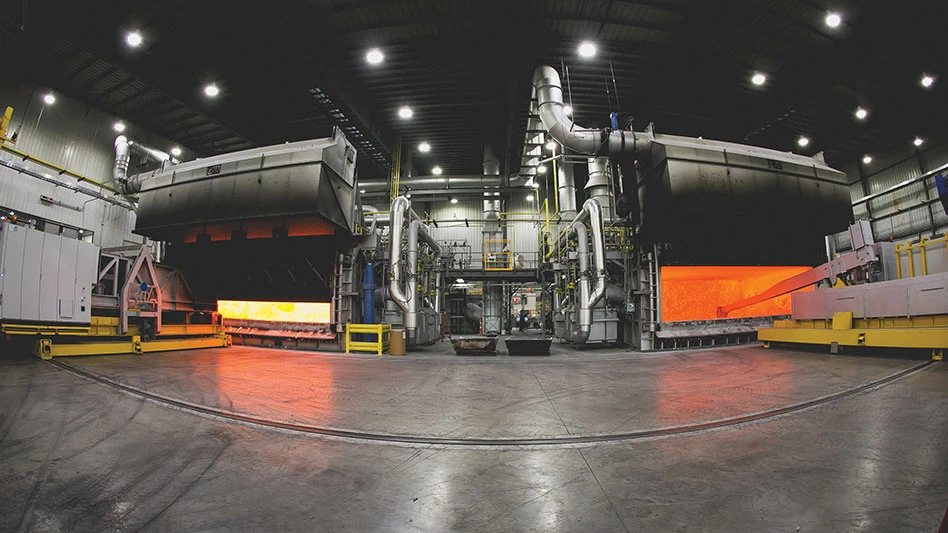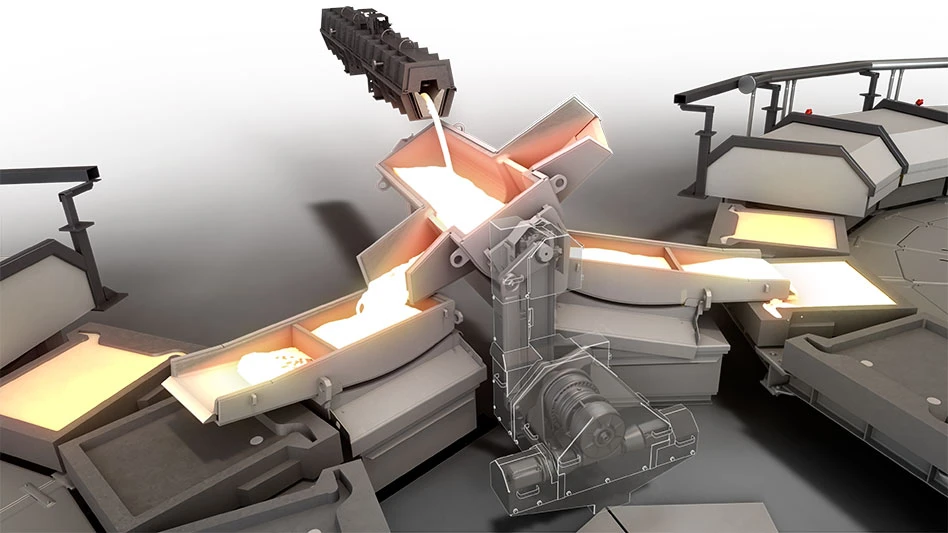
As with so many secondary and primary commodities globally, decisions made in China have been having a major impact on pricing, supply and demand for stainless steel and the raw materials that create it.
Since the turn of the century, China’s stainless steel production has been steadily and rapidly increasing. Initially, this created robust demand for stainless steel scrap and put upward price pressure on nickel, finished stainless steel and stainless scrap.
However, the situation has changed dramatically in the past several years, owing in part to China’s slowing economic growth rate, but also because that country’s mills have decided to use nickel pig iron as a feedstock rather than imported stainless steel scrap.
For scrap processors in the United States as well as those in Europe, these conditions have led to a less robust end market in which to sell at the same time that lower pricing has yielded less stainless steel and alloyed scrap flowing across inbound scales.
A world of hurt
At the 2016 Bureau of International Recycling (BIR) World Recycling Convention, held in Berlin in late May and early June, speakers and panelists at the BIR’s Stainless Steel & Special Alloys Committee Meeting seemed to agree on many of the specifics.
A primary point of agreement was that recyclers involved in the stainless steel market are suffering from too little scrap and too much new product output in China.
Jonathan Bower of the United Kingdom branch of Germany-based ELG Haniel Metals provided an update of market conditions in the alloyed steel scrap markets based on reports from BIR committee members.
Bower and other contributors noted that the production of stainless steel globally is steady and rising, but much of the increased output is in China, where mills melt very little scrap. The other predominantly negative trend is that recyclers are receiving inadequate supplies of scrap to feed mills in the other parts of the world that do want it.
In a panel discussion at the BIR meeting, Barry Hunter of New Jersey-based Hunter Alloys LLC said regarding the “universal lack of [alloyed] scrap,” that he had “never seen it like this” in his 50 years in the business.
Low copper and ferrous scrap prices in late 2015 and early 2016 (as well as low nickel prices) have combined to staunch flows into scrap yards around the world, according to reports from BIR Stainless Steel & Special Alloys Committee members.
On the Chinese production side, economist Jason Schenker of Prestige Economics, Austin, Texas, said he feared mills in that nation would continue to overproduce. “I’m very skeptical that China can absorb [its stainless steel output]. This trade issue is huge. I just don’t think they have enough of a domestic market to sell into. They may continue to sell at a loss on the world market.”

Salvatore Pinizzotto, a speaker and panelist who serves as director of market research and statistics at the Lisbon-based International Nickel Study Group (INSG), said one bright spot is that little new primary nickel production is coming online or is scheduled to in the next several years.
“There is a 10-year gap in new production,” he stated. Pinizzotto also said the majority of the world’s remaining nickel ore reserves are costly to access. There are “plenty of nickel reserves available to the world,” he commented, but, “the problem is to get this nickel out of the ground.”
It may not feel like it in 2016, when Chinese mills using Filipino nickel pig iron are putting a lid on stainless scrap demand, but in the long version of the game the world ultimately will need the nickel-bearing scrap that is collected and processed by recyclers.
Coaxing out more scrap
For recyclers, the difficulties in the stainless market in 2015 and 2016 have been tied to pricing and to volume.
With nickel as its predominant alloying element, stainless steel and scrap pricing often is tied to the price of nickel on global metal exchanges. That being the case, the last 18 to 20 months have not been kind.
In December 2014 nickel was trading for nearly $16,000 per metric ton on the London Metal Exchange (LME). That was off from a May 2014 peak of more than $19,000 per metric ton, but still relatively close to its historic high.
Subsequently, nickel prices have drifted downward, hitting the $12,000 per metric ton range in mid-2015 and falling below $9,000 per metric ton in late 2015 and early 2016.
Holding stainless steel scrap inventory that is declining in value can present one problem for recyclers, but not being able to obtain adequate supply to fill orders or generate cash flow is another. According to Hunter, that was a foremost obstacle in the first half of 2016.
The disappearance of one type of stainless steel scrap—the sorted, shredded grade known as zurik—has been tied directly to the plunging value of nickel and stainless.
Recyclers and brokers contacted for the June 2016 Recycling Today article “Among the Wounded” were unanimous in saying that in late 2015 and early 2016, shredder operators put little emphasis in using their downstream systems to isolate and market the zurik grade.
“With the value of zurik so low, the law of diminishing returns comes into play, and many [shredder operators] can’t justify running the material a second or third time to produce a zurik product clean enough to export,” Mark Hadacek of St. Louis-based Alter Trading told Recycling Today for the June article.
The reduction in flows of other stainless steel scrap grades may be tied to several other factors. At the BIR panel discussion, Schenker remarked that globally and in the U.S., “The consumption of durable goods has slowed.” This could imply a reduction in stainless steel factory trimming (prompt) scrap availability and also slowing flow of obsolete stainless steel-bearing appliances into scrap yards.
Recyclers who managed to lure stainless scrap into their facilities should find a waiting market, according to United States Geological Survey (USGS) statistics.
The USGS says stainless mills and foundries consumed some 1.34 million metric tons of nickel-bearing scrap in 2015. They did this while producing more than 1.8 million tons of stainless steel, which represented an 8 percent increase from 2014 output.
To what extent this can improve circumstances for the stainless scrap market in the remainder of 2016 may depend on domestic and global factors.
Reversal of fortune
For the price of nickel and nickel-bearing scrap to rise, buyers and sellers of the metal will have to be convinced that supply is not greatly outpacing demand.
Pinizzotto of the INSG told BIR delegates he believes the global market is lining up in the right way.

“Overall, we see a kind of small supply deficit for 2016, of about 49,000 metric tons,” he commented. “We hope it is the first of many deficits to come, and then hopefully a better nickel price.”
A small supply deficit, ideally leading to several larger ones, will help a metal that has of late experienced a supply overhang.
INSG’s figures show a cumulative nickel surplus of 685,000 metric tons from 2007 to 2015, which Pinizzotto called “quite a huge volume.”
Specific to scrap, prior to 2009, China was a major importer of stainless steel scrap grades. In 2009, Chinese producers imported more than 700,000 metric tons of stainless steel scrap; but, in 2010, as producers gained access to Indonesian and Filipino nickel pig iron, that figure plunged to less than 350,000 tons, and “it has not recovered,” Pinizzotto said.
Chinese mills returning to the global stainless steel scrap market at their 2000-to-2009 levels does not seem to be in the cards, therefore relief for the stainless scrap market in North America may be tied instead to global primary nickel supplies and pricing.
It will be difficult for nickel and stainless steel scrap to achieve a higher price, according to Pinizzotto, “until this high level of inventory is reduced in a constant way.”
Get curated news on YOUR industry.
Enter your email to receive our newsletters.

Explore the August 2016 Issue
Check out more from this issue and find your next story to read.
Latest from Recycling Today
- Fenix Parts acquires Assured Auto Parts
- PTR appoints new VP of independent hauler sales
- Updated: Grede to close Alabama foundry
- Leadpoint VP of recycling retires
- Study looks at potential impact of chemical recycling on global plastic pollution
- Foreign Pollution Fee Act addresses unfair trade practices of nonmarket economies
- GFL opens new MRF in Edmonton, Alberta
- MTM Critical Metals secures supply agreement with Dynamic Lifecycle Innovations





